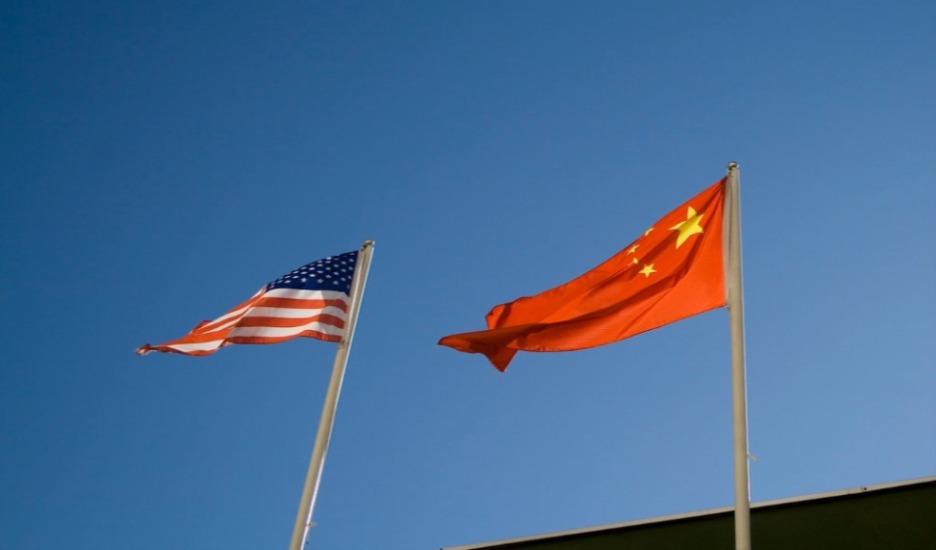China’s Capture of U.S. Underwater Drone Violates Law of the Sea
On December 16 a Chinese warship snatched a U.S. underwater drone literally from under the eyes of the crew of a U.S. survey ship. The USNS Bowditch is an unarmed naval oceanographic vessel that was recovering two underwater drones in the Philippine exclusive economic zone (EEZ), about 50 miles northwest of Subic Bay.
Published by The Lawfare Institute
in Cooperation With

On December 16 a Chinese warship snatched a U.S. underwater drone literally from under the eyes of the crew of a U.S. survey ship. The USNS Bowditch is an unarmed naval oceanographic vessel that was recovering two underwater drones in the Philippine exclusive economic zone (EEZ), about 50 miles northwest of Subic Bay. The drones, or unmanned underwater vehicles (UUV), are underwater craft that navigate either autonomously or remotely, and may be launched from surface, subsurface, or aviation platforms (Commander’s Handbook on the Law of Naval Operations, para. 2.3.5).
China’s capture of the drone violates three norms embedded in international maritime law and reflected in the United Nations Convention on the Law of the Sea and other treaties. First, the drone is a “U.S. vessel,” and its seizure shows a willingness to openly steal American property operating legitimately at sea. Second, China’s action is all the more blatant because the U.S. “vessel” enjoys sovereign immune status. No foreign nation may purport to assert legal jurisdiction over it. Third, the capture is further evidence of China’s penchant for disrupting freedom of navigation on the high seas, despite Beijing’s repeated assertions that it has never interfered with freedom of navigation in the South China Sea.
1. China’s Seizure of a U.S. “Vessel”
“Vessels” are broadly defined in international maritime law, and are generally synonymous with “ships.” The London Dumping Convention defines a “vessel” as a “waterborne or airborne craft of any type whatsoever.” This expression includes in article 2(3) “air cushioned craft and floating craft, whether self-propelled or not.” Article 1(6) of the 1996 Protocol to the London Dumping Convention also includes “waterborne crafts and their parts and other fittings.” Similarly, article 3 of the International Regulations for Preventing Collisions at Sea defines “vessel” as “every description of watercraft, including non-displacement craft, WIG craft, and seaplanes, used or capable of being used as a means of transportation on water.” This definition includes autonomous and even expendable marine instruments and devices, such as the U.S. drone stolen by the Chinese. The variation between manned systems and unmanned systems, such as size of the means of propulsion, type of platform, capability, endurance, human versus autonomous control and mission set, has not been a defining character of what constitutes a “vessel” or “ship.” Moreover, the seizure of the U.S. drone was a violation of COLREGS itself, which requires mariners to take affirmative steps to avoid closing on other vessels in the water.
2. China Violated U.S. Sovereign Immunity
Like their manned counterparts, UUVs engaged exclusively in government, noncommercial service enjoy the legal status of sovereign immune craft. Furthermore, the legal status of a UUV is not necessarily dependent on the status of the ship, submarine or aircraft from which it is launched. The sovereign immune status of military UUVs affords them complete immunity from the jurisdiction of any state except the flag state in accordance with articles 32, 95-96 and 26 of the United Nations Convention on the Law of the Sea (UNCLOS). Furthermore, the drone from the Bowditch was engaged in military activities. “Military activities” include, inter alia, normal naval ship or vessel and aircraft operations, task force maneuvers, launch and recovery of military devices, and intelligence, surveillance and reconnaissance, weapons and ordnance testing, and military marine data collection and hydrographic surveys. Military activities beyond the territorial sea are exempt from the assertion of jurisdiction by foreign ships or states.
Article 29 of UNCLOS defines “warship” as “a ship belonging to the armed forces of a State bearing the external marks distinguishing such ships of its nationality, under the command of an officer duly commissioned by the government of the State and whose name appears in the appropriate service list or its equivalent, and manned by a crew which is under regular armed forces discipline. Although it could be argued that a UUV is “under the command” of an officer, they are not “manned by a crew” and therefore do not qualify as a “warship.” That does not mean, however, that UUVs are not entitled to sovereign immunity. As a government-owned or operated watercraft used exclusively for non-commercial services, UUVs qualify as sovereign immune craft independent of the status of its launch platform (UNCLOS article 32 and Commander’s Handbook para. 2.3.6).
3. China Interfered with U.S. High Seas Freedoms
UNCLOS codifies the international rules concerning the rights and freedoms of navigation on, under and over the world’s oceans. These rules were originally designed for manned ships and aircraft, although they have direct applicability to unmanned systems, including tethered and autonomous vehicles.
The Chinese scooped up Bowditch’s drone in the EEZ of the Philippines—an area within which both China and the United States may exercise high seas freedoms. All ships and aircraft, including unmanned systems, enjoy high seas freedoms of navigation and overflight and other internationally lawful uses of the seas related to those freedoms seaward of the 12-nm territorial sea (articles 58 and 87, UNCLOS). These high seas freedoms include the right to engage in the full range of aforementioned military activities. This position is confirmed by the second sentence of Article 86 of UNCLOS, which provides that “this article does not entail any abridgement of the freedoms enjoyed by all States in the [EEZ] in accordance with Article 58.” The only limitation in Articles 58 and 87 is that these activities must be conducted with “due regard” for the rights of other states in the EEZ and high seas, as well as the safe conduct and operation of other ships and aircraft. By interfering with the U.S. underwater drone, China failed to observe this “due regard” standard, which is an enduring feature of safe navigation at sea.
4. The Danger of China’s Hostile Act
Media reports indicate that the United States has formally protested the incident, and has called on China to immediately return the drone and comply with international law of the sea norms. The United State should go one step further and warn China that any future interference with U.S. survey ships or reconnaissance aircraft operating legally on, under and over the high seas will be viewed as a hostile act, and that the U.S. forces reserve the right to respond in self-defense, as warranted by the circumstances. Doing so merely restates paragraphs 3(e)-(f) of Enclosure A of the U.S. Standing Rules of Engagement CJCSI 3121.01B, which stipulates that the threat or use force to impede the mission of U.S. forces constitutes a demonstration of hostile intent, or even a hostile act, which may elicit a defensive response.



.jpg?sfvrsn=5a43131e_9)


